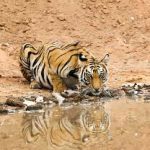Wildlife Itineraries

Wildlife Itineraries can be incredibly diverse and exciting, depending on the region and the species you want to encounter.
Here are some ideas for wildlife-centric itineraries in various locations:
African Safari Adventure:
Location: Serengeti National Park, Tanzania
Highlights: Witness the Great Migration, spotting lions, elephants, giraffes, wildebeests, zebras, and various bird species.
Itinerary: Game drives, hot air balloon safaris, and guided walks with experienced rangers.
Galapagos Islands Exploration:
Location: Galapagos Islands, Ecuador
Highlights: Encounter unique wildlife like giant tortoises, marine iguanas, blue-footed boobies, and diverse marine life during snorkeling or diving.
Itinerary: Island hopping tours, nature walks, and snorkeling expeditions led by naturalist guides.
Borneo Rainforest Expedition:
Location: Borneo, Malaysia
Highlights: Spot orangutans, pygmy elephants, proboscis monkeys, and a vast array of tropical birds in their natural habitat.
Itinerary: Jungle treks, river cruises, and visits to wildlife sanctuaries and rehabilitation centers.
Arctic Wildlife Expedition:
Location: Svalbard, Norway
Highlights: Witness polar bears, walruses, Arctic foxes, reindeer, and various bird species in a unique Arctic landscape.
Itinerary: Expedition cruises, wildlife tracking excursions, and exploring ice formations via small boats or hiking.
Australian Outback Adventure:
Location: Kakadu National Park, Australia
Highlights: Discover kangaroos, wallabies, crocodiles, various bird species, and Aboriginal rock art.
Itinerary: Bushwalks, boat cruises, and cultural experiences with indigenous guides.
Costa Rican Rainforest Trek:
Location: Corcovado National Park, Costa Rica
Highlights: Encounter jaguars, sloths, monkeys, colorful birds, and vibrant tropical flora.
Itinerary: Guided hikes, wildlife observation, and canopy tours.
When planning a wildlife itinerary, consider the best seasons for animal sightings, the local climate, and the services of experienced guides or tour operators who prioritize responsible and sustainable wildlife encounters. Always respect the natural habitat and follow ethical wildlife viewing practices to ensure minimal disturbance to the animals and their environment.

